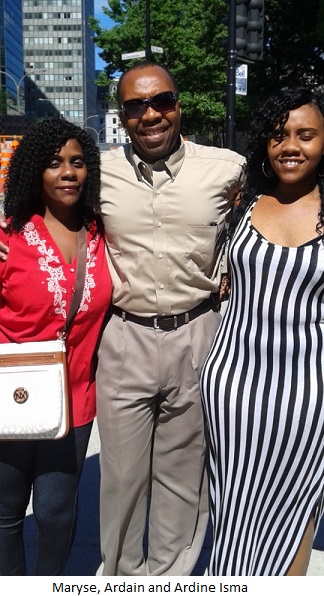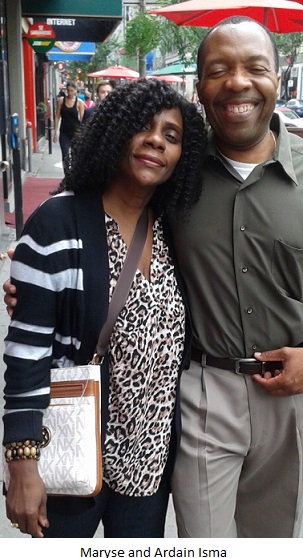CSMS Magazine
Last week, I flew to Montreal with a part of my crew—wife and children. Like every time we travel there, we always settle in its magnificent downtown, a glamourized hub for those who want to savor the best this officially French city of Canada has to offer. Its breathtaking boulevards, its old port in Le Vieux Montréal, its underground shopping mall, its historic China Town, its Palais Des Congrès and more are all blended to create a surreal atmosphere quite friendly to adventurers seeking a piece of the elusive paradise.
Besides its exuberant charm, Montreal contains in its fold something truly unique in North America: Its noticeable bilingualism. As an academic and an eyewitness to complex realities of society, it didn’t take me long to fall in love with the natural instinct that drives folks in that part of Canada to weave effortlessly between French and English. Around the downtown district and eastward, expressing in either language is like music to the ears of everyone.
Thanks to a robust French Immersion program introduced in the 1970s in the public school system, many Canadians, whose English is their native language, grow up speaking French as if it were their native language. Twenty-three percent of the Canadian population is Francophone, heavily concentrated in Quebec where more than 50 percent of the population can claim to be bilingual. Preserving French in Quebec has long been the cornerstone behind an independent movement to part from the rest of Canada. To the independent-minded citizens, living in French is not just a choice, but a matter of survival.
Knowing the implications which may have resulted, should Quebec separate, the federal government in Ottawa has gone out of its way to provide Quebec with everything it wants, short of independence, and immersing school children in either language is one of the key components in the effort to keep Canada together.
The immersion program is optional and not compulsory. It is a choice that parents must make on whether or not they want to send their children to schools that offer such programming. Once enrolled, students are heavily encouraged to communicate in either French or English—depending on the immersion type—as consistently as possible. Teachers in Immersion schools are competent in speaking both languages.
This is truly a success story. The immersion program was designed to: (a) capitalize on children’s ability to learn language naturally and effortlessly; (b) take advantage of their social ability and open attitudes to language and culture; (c) reflect on the building blocks of language by emphasizing the use of languages for communication and (d) not stopping the children from participating in native language development, academic achievement or general cognitive development.
Exploring Eastern Canada
 As we did in the past, after few days in Montreal, we rented a car and headed east on Highway 40 toward the provincial capital of Quebec City. Along the way, we stopped at every small town on both banks of the mighty Saint Lawrence River, speaking to the locals. The farther east we went, the lesser of an English influence we encountered. In the town of Trois-Rivières on the north bank, few folks could relate to our standard English, and my children’s rusty French could not keep up with the Quebecers’ phonetic sound—far different from what they are accustomed to at home while watching French TV 5. Dad and mom had to come to the rescue.
As we did in the past, after few days in Montreal, we rented a car and headed east on Highway 40 toward the provincial capital of Quebec City. Along the way, we stopped at every small town on both banks of the mighty Saint Lawrence River, speaking to the locals. The farther east we went, the lesser of an English influence we encountered. In the town of Trois-Rivières on the north bank, few folks could relate to our standard English, and my children’s rusty French could not keep up with the Quebecers’ phonetic sound—far different from what they are accustomed to at home while watching French TV 5. Dad and mom had to come to the rescue.
As we rolled into Quebec City’s Historic District, where foreign tourists and balladeers intermingled in English, my son seemed to have reconquered what he had just left and now missed back in Montreal. Just like in English Canada, all urban centers are stunningly bilingual. To me, Quebec City appeared to have shed a new light in understanding French history and culture in North America. It is also the most European Francophone city with its bakeries, its strip malls etc… It reminded me of Nantes, France.
The weather was pleasant, like Saint Augustine, Florida in September. Some folks were promenading along the sidewalks. Lovers strolled hand-in-hand, tête-à-tête, exchanging kisses.
The next day, we drove west to Ottawa, following Interstate 40 West, which turns to Highway 417 once we crossed the provincial line into Ontario. The road to Ottawa is not as scenic as the one that leads to Quebec City. Here, there are more tree farms buffered by towering maples. Every here and there, however, one can see a vast open, cultivated field of maize or soy beans. A big farm house is anchored in the middle of it, making it the perfect picture for a postcard. The distance to Ottawa is shorter than the road to Quebec City from Montreal. We would stop at every town to chat with the locals. Here on the Ontario side, everyone spoke French to us with such ease that it took me sometimes to understand I was in English Canada.
The ambiance in Ottawa is as just the same as in Montreal, although Montreal is a much bigger town. Over 2 million souls live there. Ottawa is also bilingual, and the Quebecer’s town of Gatineau is just across the Ottawa River. For all practical purposes, Ottawa and Gatineau are one, the same town which falls on the dividing line between the province of Quebec and that of Ontario.
In Ottawa, we checked into Château Laurier, an imposing hotel on the bank of the Ottawa River, right next to the historic parliament building. This hotel has a beautiful terrace upon which troubadour musicians with their acoustic guitars serenade tourists who come to eat dinner at the hotel restaurant. We enjoyed the moment, but we didn’t eat. Instead, we went for the iron market, near Downtown where a multitude of souvenir shops and restaurants are located.
It is nice to visit Canada in August. It is not hot—may be windy. One can walk around nicely without any discomfort. Another advantage for American travelers is that the Canadian dollar is weaker. It is 78 cents to the US dollar.
Despite Canada’s foreign policy vis-à-vis Haiti, and now there is even talks of deporting Haitians, Canada’s immigration policy is more generous toward immigrants than what we have in the United States. Illegal immigrants are still giving a work permit and a state insurance card to go the doctor should he or she become ill (Read La Maison d’ Haiti in Montreal). I like to travel there because of its unique bilingualism—something I profoundly admire.
Note: Dr. Ardain Isma is the chief-editor for CSMS Magazine. He is also a novelist. His latest novel Midnight at Noon can be purchased at all book retailers. He may be reached at publisher@csmsmagazine.org To purchase a copy, click here: Midnight at Noon.


